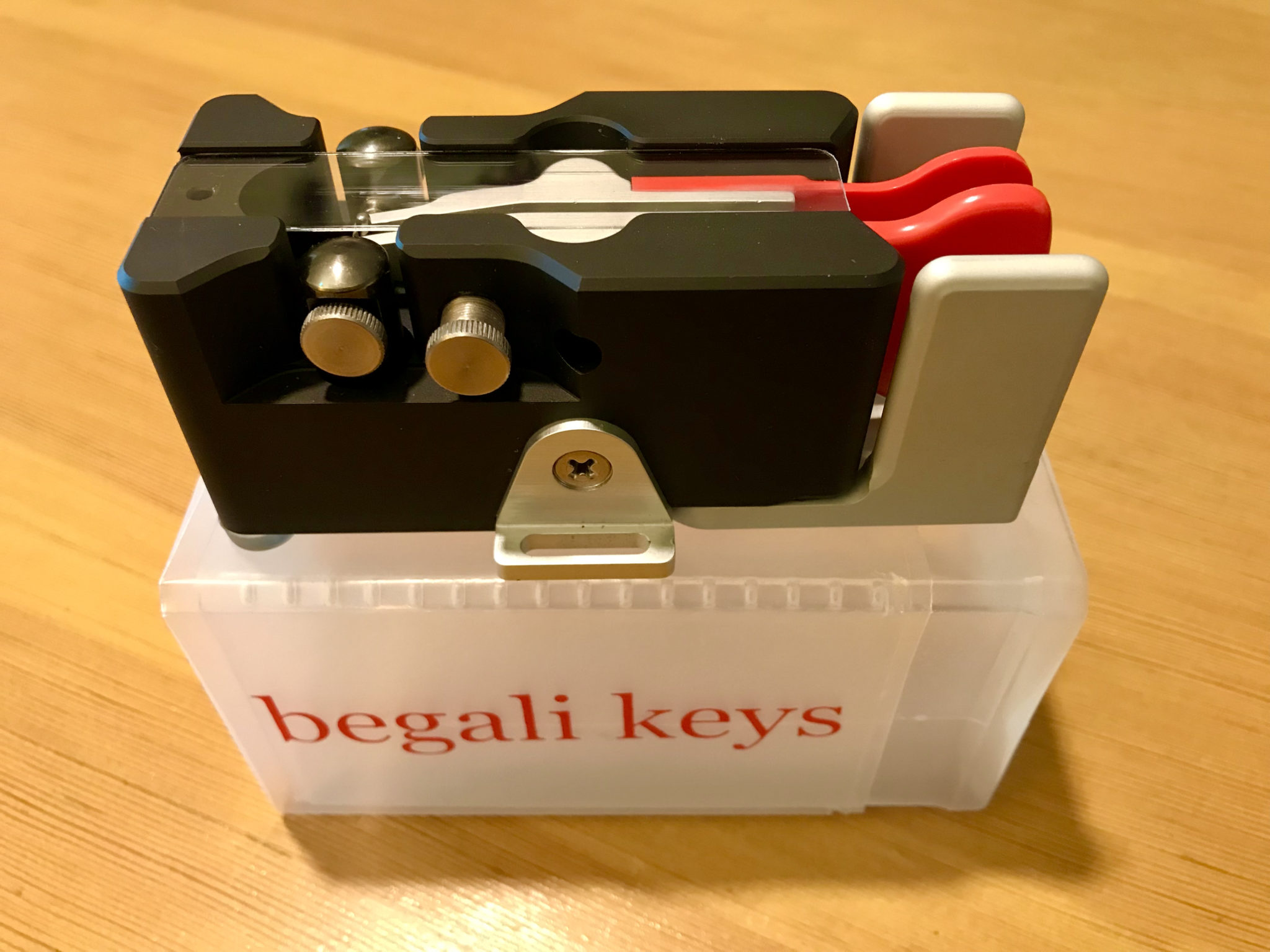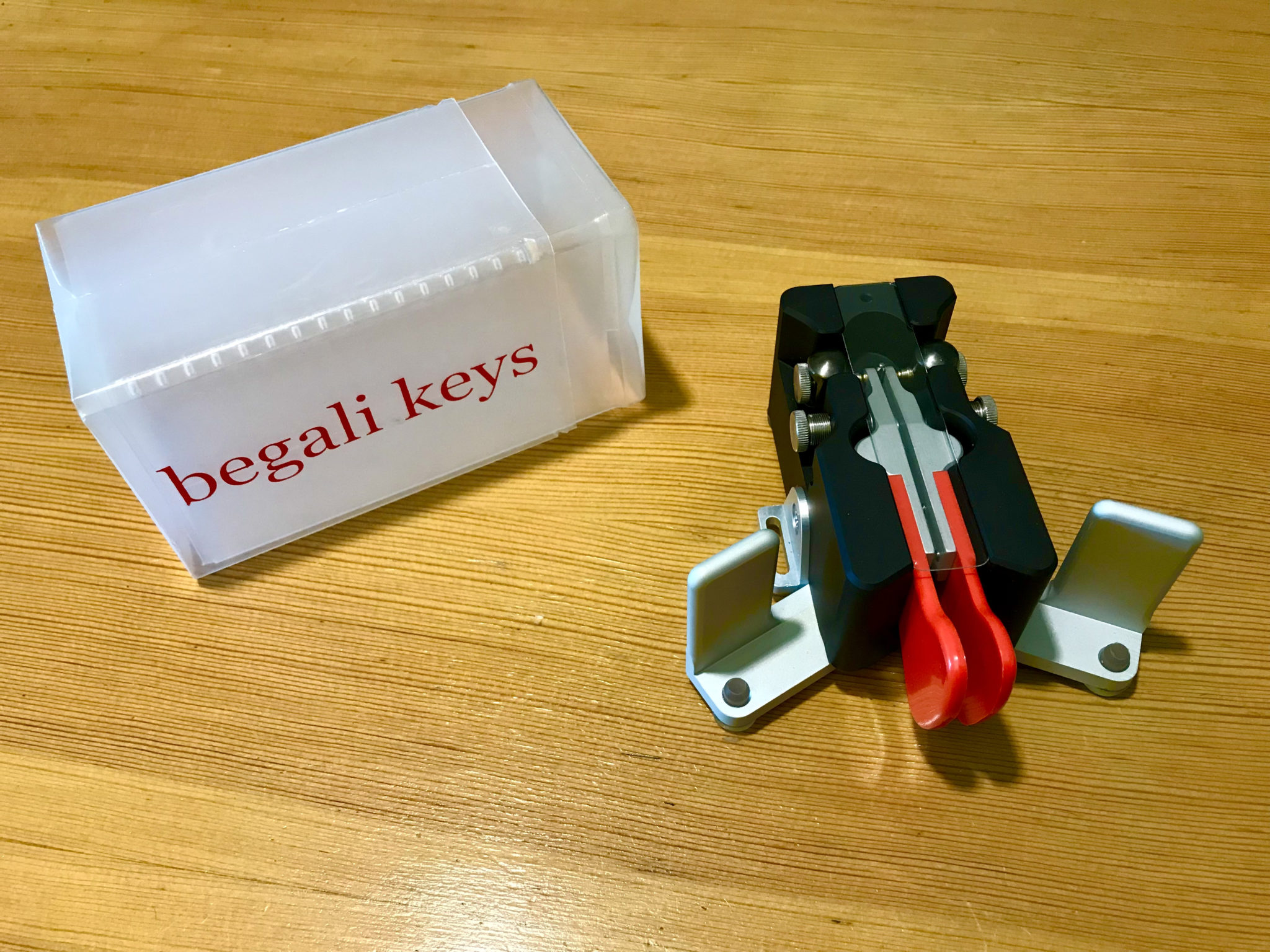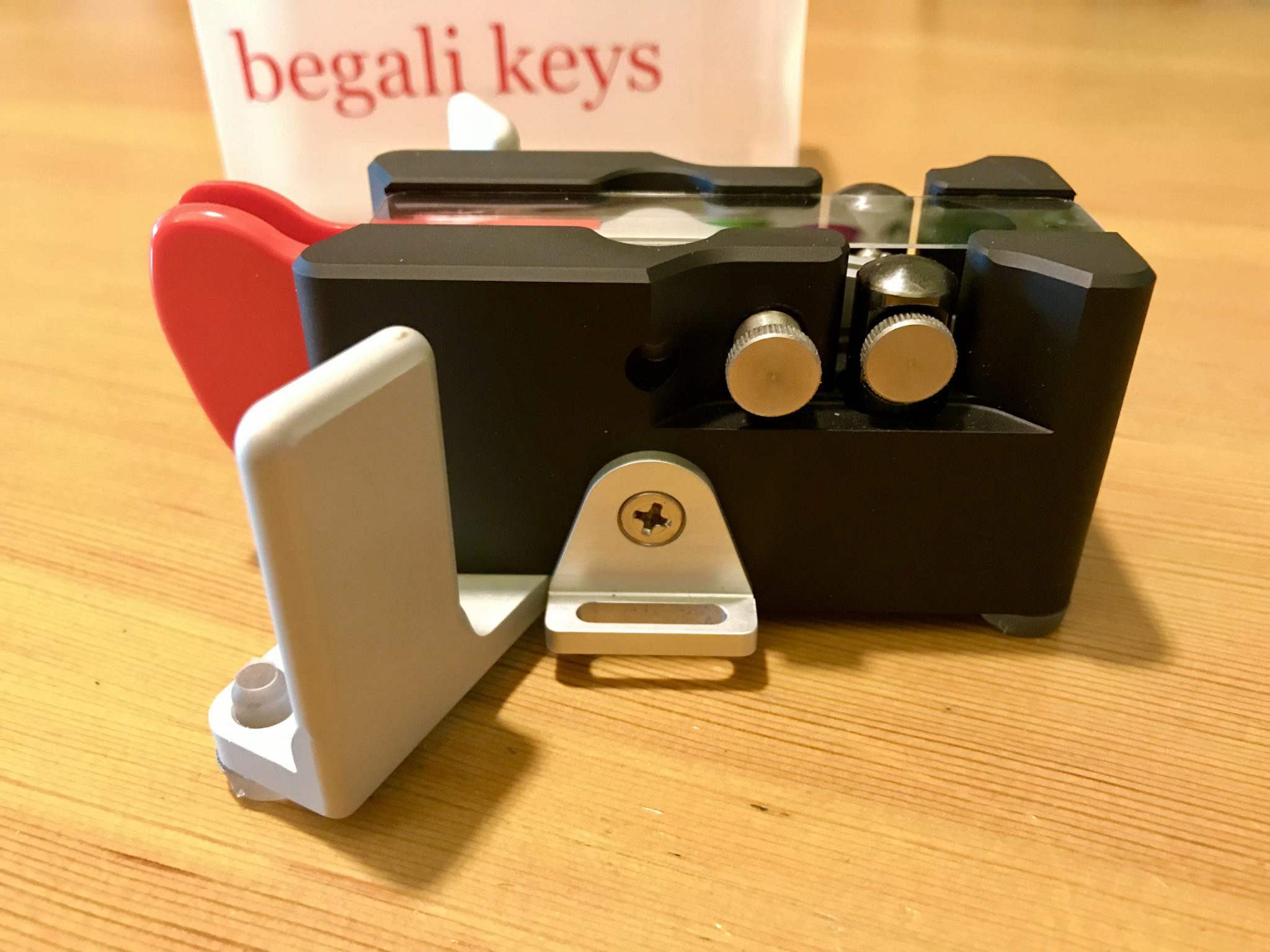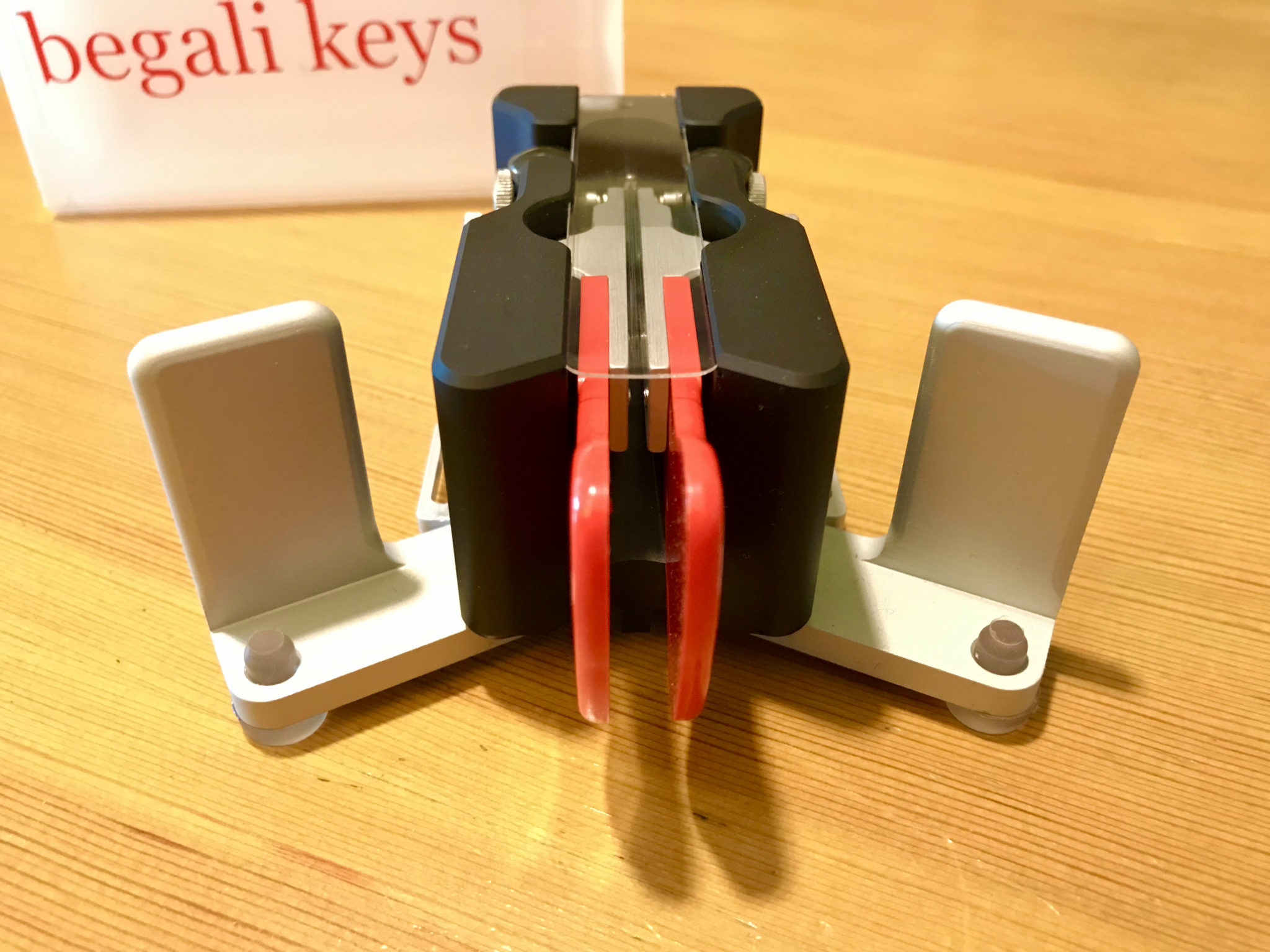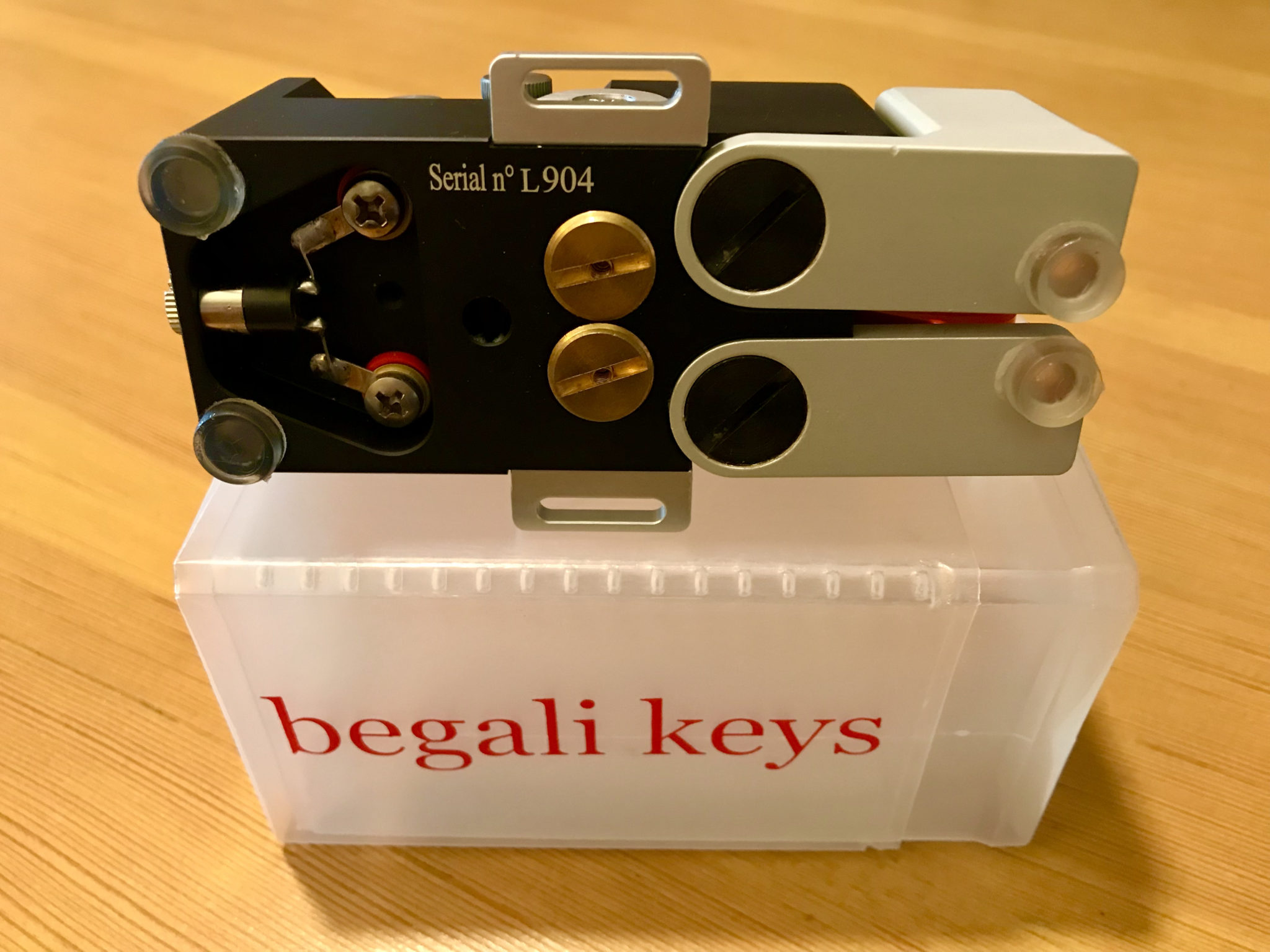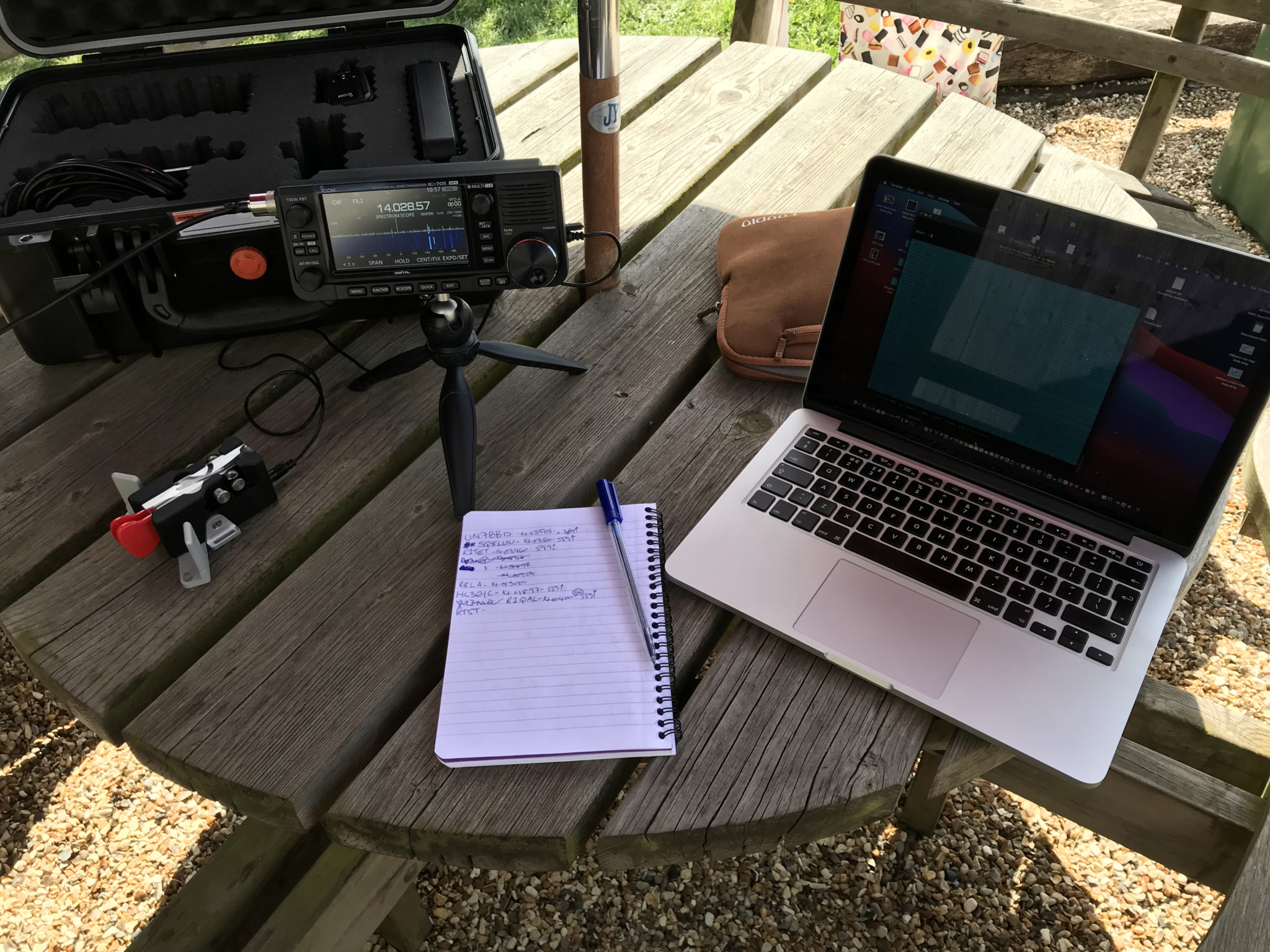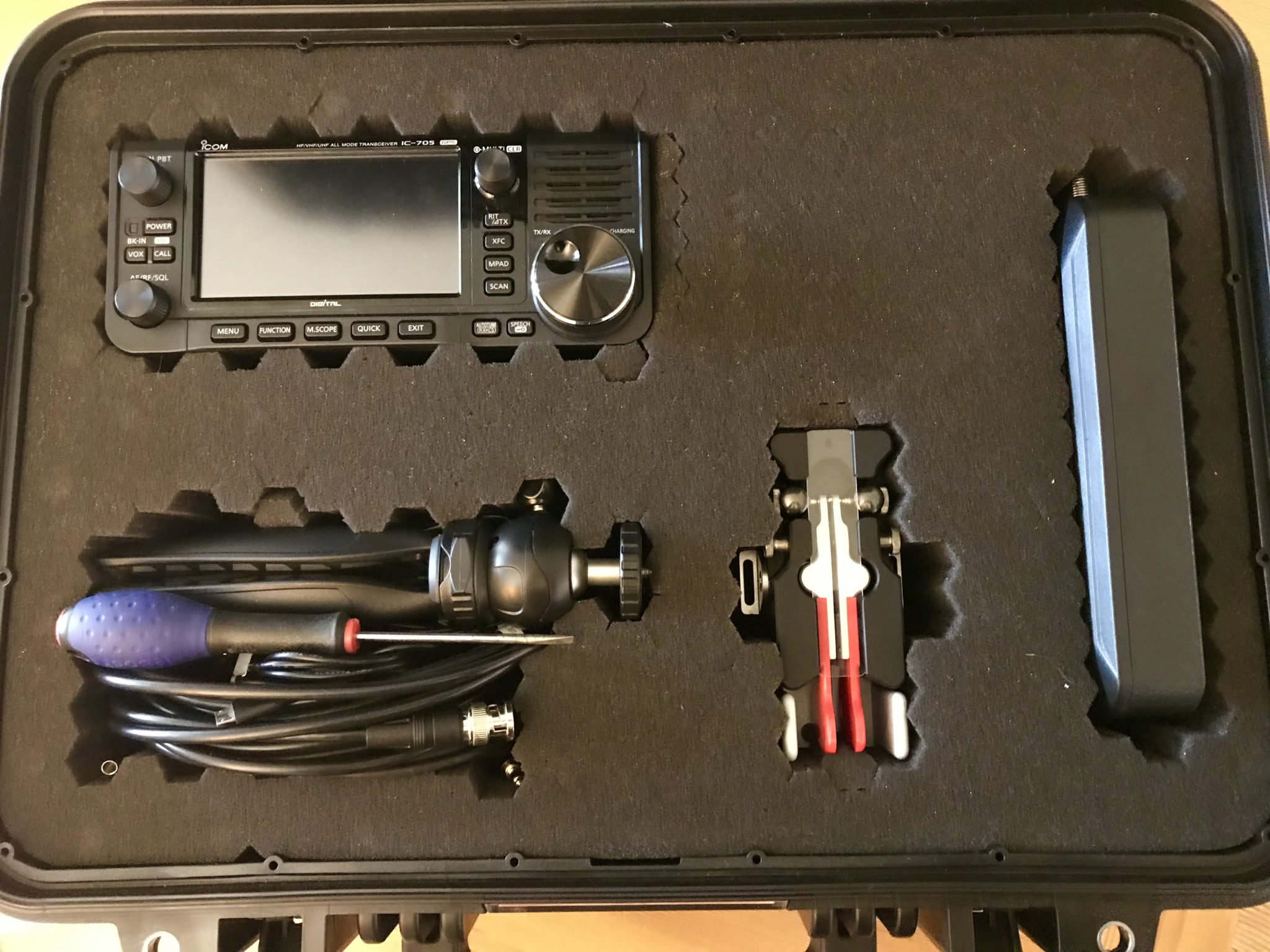Operating a QRP station can often make you feel like you’re not getting out when no one responds to your multiple CQ calls. This was the case the other day when I was trying out my new to me Begali Traveler Light morse key.
I was on the 20m band calling and calling to no avail, the band was open as I could hear other stations just fine so I knew there was traffic on the band. The SWR on my EFHW Vertical was perfect as it always is and so I knew there wasn’t a problem with the coax/antenna combination.
Wanting to know if my signal was indeed going anywhere I decided to make use of the SeeMe facility on the DXCluster that I use. The SeeMe facility effectively allows you to enable spots for your own callsign from the Reverse Beacon Network (RBN).
The SeeMe facility is easily switched on by issuing the set/seeme command on the DXCluster of your choice. Once enabled you will start to see spots for your own callsign from the RBN every time you call CQ using CW.

As you can see above, I was clearly getting out very well with some great signal reports from a good spread of stations even though I was only using 5w of CW.
You can of course use the RBN website to view the spots if you prefer, it’s not quite as realtime as the DXCluster but, it provides the same information eventually.
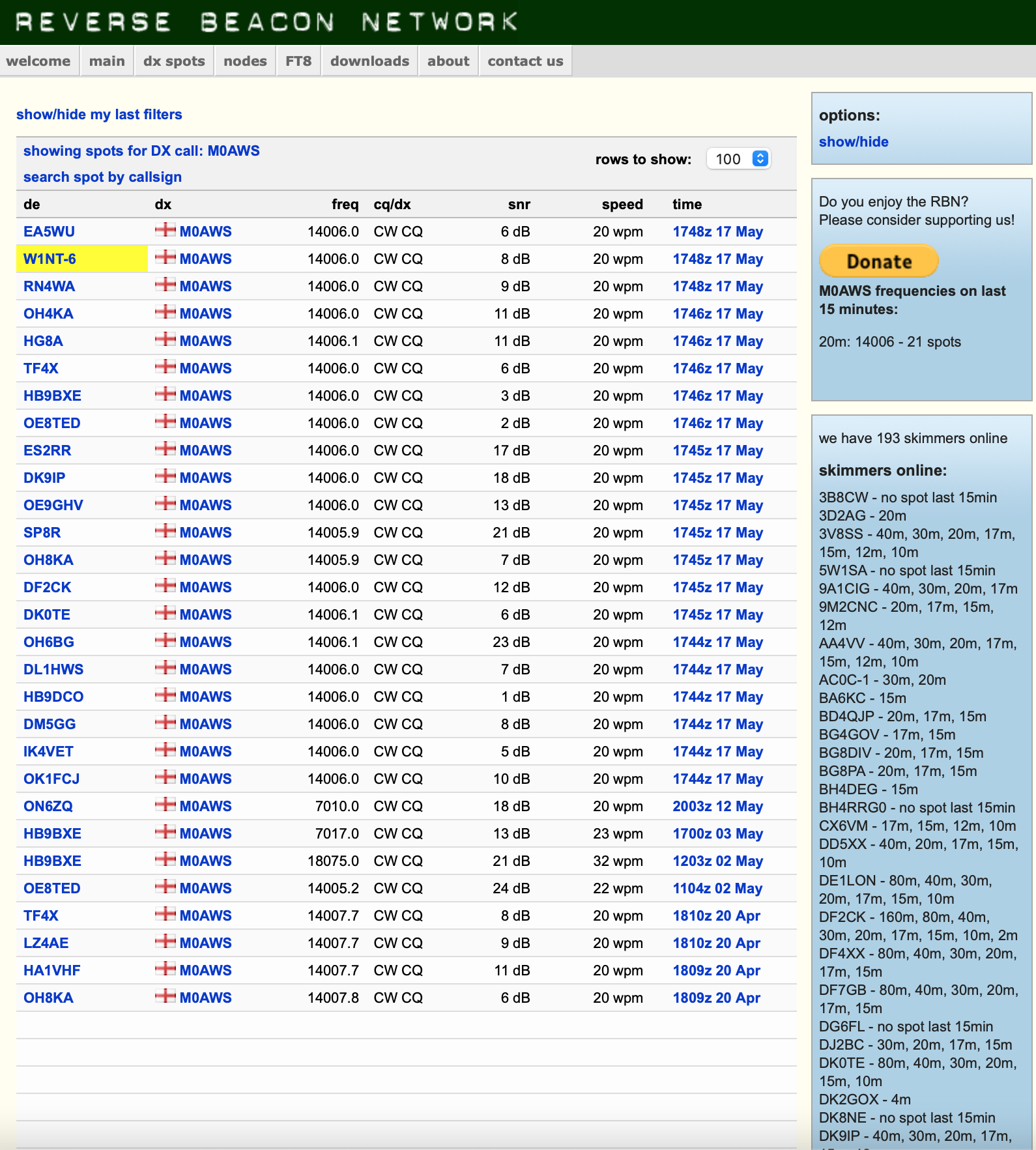
The view on the RBN Website is almost the same as that from the DXCluster however, it also shows your CW speed in WPM. I was also surprised to get a spot from the USA at 8dB, that’s a good signal (Just over S2) considering I was only using 5w of power.
I came to the conclusion that no one needed an exotic M0 call for their log and so I went on to my normal search and pounce approach and worked a bunch of stations spread around Europe and Asiatic Russia. My little 5w signal did well and I was able to get through the pileups by using my slide off to the side technique so that my little signal stood out on it’s own. This technique works well when trying to get a QRP signal into a pileup and is used often.
Needless to say, my Begali Traveler Light twin paddle morse key once setup how I like it was superb to use, light to the touch, quick and responsive. Begali make such beautiful morse keys!
More soon …

